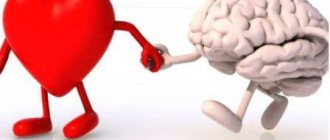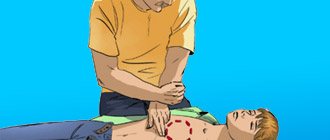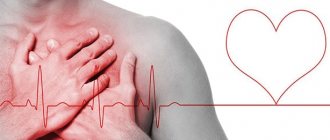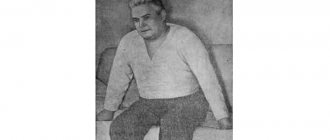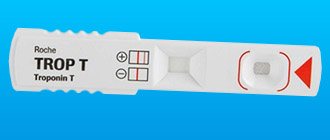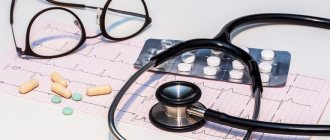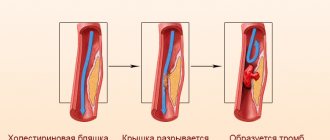Main risk factors
To prevent the development of diseases associated with the cardiovascular system, you should familiarize yourself with the main risk factors for the disease. Among the main reasons for the occurrence of a second or third heart attack are:
- Hypertension. High blood pressure provokes problems in the functioning of the cardiovascular system. The vessels lose their elasticity and are no longer able to fully function.
- The presence of other pathologies that are characterized by metabolic disorders. For example, diabetes mellitus often causes the development of dyslipidemia, which affects blood vessels.
- According to statistics, men are more likely to have a heart attack.
- Heredity. Diseases such as arterial hypertension and atherosclerosis are inherited.
- Age-related changes that occur in the body after 50 years.
- An inactive lifestyle provokes an increase in blood pressure. For this reason, metabolic disturbances occur. There is a lack of oxygen in the blood.
- Unhealthy Lifestyle. Nicotine has a detrimental effect on blood vessels.
- Poor nutrition. Fatty, sweet, salty foods are bad for your overall health.
- Systematic stress and strong feelings can lead to a heart attack.
Doctors recommend eating right and leading a healthy lifestyle. If someone has had cardiovascular diseases in their family, it is important to regularly visit a doctor and undergo a heart attack diagnosis. These recommendations will help prevent the occurrence of pathology.
Limitations that cannot be avoided
Myocardial infarction belongs to the category of diseases that significantly affect the functioning of other organs and systems. Therefore, it is so important to direct all efforts to ensure that the aggravation of the process does not happen again.
In combination with other pathologies that a particular patient has in his anamnesis, this diagnosis requires fundamental changes in his lifestyle. Such restrictions are necessary to at least minimize the risk of recurrent heart attack.
The table below shows what should not be done after an MI:
| № | Area of activity | Restrictions |
| 1. | Physical activity | There is no need to put such loads on the body that can provoke increased contractions of the heart muscle. After an MI, this is extremely dangerous, as an aneurysm may develop. Physical activity during this period should be dosed. The best option is exercise therapy, walking with a pedometer, aerobic exercise. |
| 2. | Nutrition | Avoid fried and fatty foods. High-calorie foods should be removed from the diet to prevent weight gain. Salt should be limited and spices should be completely eliminated. |
| 3. | Emotional condition | Any situation that provokes emotional instability should be avoided. Irritability, anxiety, fears and worries increase the number of heart contractions. |
| 4. | Habits | Alcohol and nicotine should be completely avoided. These are the main risk factors for recurrent MI. |
| 5. | Climate change | In this area, sudden changes are undesirable, as they can negatively affect the patient’s well-being. |
Important point! It is strictly forbidden for the patient and relatives to change or supplement drug treatment and other points of the recovery program. Any “independent activity” in this matter can lead to unpredictable consequences.
Signs of a heart attack
A heart attack cannot occur without symptoms. The form of myocardial infarction has a clear clinical picture. First of all, the patient feels severe pain in the heart area. Signs of a microinfarction in men manifest themselves in the form of squeezing and cutting pain in the chest, which radiates to the left side of the body. Unpleasant sensations appear in the neck and left shoulder blade. Breathing problems develop. An attack of suffocation is possible. In this case, it is very difficult for a person to take a breath. The heart rhythm is disturbed and the pulse increases significantly. The skin becomes pale and the lips become blue. The patient feels a feeling of anxiety and restlessness. In addition, severe nausea, dizziness, weakness and stomach pain occur. Self-medication can be fatal. Some patients often think about the question of how many heart attacks a person can suffer, but not everyone knows that this is purely individual.
Exercise stress
Early but moderate physical activity is recommended to prevent blood clots. If surgery is performed, for example, stenting, then physical exercises are performed in bed. This is passive and active flexion and extension of the limbs, turns.
After completing the inpatient phase, the doctor recommends that the patient begin with low-intensity physical exercise, gradually increasing the complexity and duration of the workout. The set of exercises is selected individually, taking into account age, gender and diagnosis. Walking in the fresh air with heart rate monitoring is very useful. The load should be physiological and not cause pain in the heart area or shortness of breath.
Climbing stairs independently is useful if the patient lives in a multi-story building. It is important to observe how many flights of stairs you go up, shortness of breath occurs, and your heart rate increases.
It is recommended to visit physical therapy rooms, where the patient will be prescribed a set of therapeutic exercises for patients who have suffered a heart attack. The most often used are the complex of exercises of Professor N. G. Propastin for patients over 50 years old and the complex of I. V. Muravov, which presents exercises in all planes: lying, standing, sitting, so these techniques are suitable for patients at different stages of rehabilitation and in different physical conditions condition.
Treatment process
Thanks to properly selected rehabilitation measures after a heart attack, the risk of relapse is reduced. Comprehensive treatment will help return a person to a full and active life. At the initial stage of treatment, therapy is carried out in a hospital setting. The course of treatment is carried out under the strict supervision of the attending physician. During therapy, the patient is prescribed antihypertensive and antiarrhythmic drugs. Calcium channel blockers and diuretics have a positive effect on the functioning of the cardiovascular system. In addition, an important role in the treatment process is played by:
- Physiotherapy. The patient is prescribed physical therapy. The cause of poor coordination when walking can be physical inactivity. This is why it is important to carry out therapeutic exercises.
- Proper nutrition. The patient should refuse junk food. The diet should contain as many vegetables and fruits as possible. You should focus on those foods that contain a lot of protein and calcium.
- The right way of life. The patient should give up smoking and alcoholic beverages.
- It is important to control weight and treat chronic diseases.
If one of the signs of a microinfarction appears in men or women, it is important to immediately consult a doctor or call an ambulance. Self-medication is prohibited. Only after undergoing a full medical examination, the doctor prescribes treatment that will help improve the patient’s health. Based on the diagnostic results obtained, the specialist selects effective drugs.
Rehabilitation methods
Typically, after a heart attack, a person remains in the hospital for a couple of weeks. However, after discharge from a medical institution, it is also very important to independently monitor your health and help your body rehabilitate.
Of course, your doctor will prescribe you the use of special medications. However, this is not all. In addition to them, you will need to connect all possible rehabilitation methods, including traditional ones.
It is not always possible to say exactly how many years people live after a heart attack. However, to prolong your life, you need to take care of your health. Doctors recommend using homeopathic methods as additional treatment. Preparations made from medicinal hawthorn are capable of dilating blood vessels, have a sedative effect, and also reduce blood pressure quite well.
It is also recommended to take herbal remedies that can eliminate swelling. In this way, the patient will be able to rid the heart, as well as neighboring tissues, of excess fluid, which will improve blood circulation and allow the cells to be saturated with useful substances.
Quite often, a heart attack attacks people who have led an unhealthy lifestyle. In this case, experts strongly recommend making positive changes to it. Namely, it is very important to make positive adjustments to your diet, play sports and get rid of bad habits. It is also worth learning to isolate yourself from stressful conditions and walk in the fresh air more often. For example, in a park or even outside the city.
Keep in mind how long a person lives after a major heart attack depends on a large number of factors. The main thing is to ensure complete peace of mind during the rehabilitation period. After the heart attack itself, a scar forms on the heart muscle, which will take several months to heal. All this time you need to be in a state of maximum peace and relaxation.
How long do they live after a heart attack?
How many heart attacks can a person have? No one can answer this question for sure. Even doctors say that this indicator is influenced by many factors. Among which:
- patient's age;
- area and localization of heart damage;
- concomitant pathology;
- proper rehabilitation.
For example, even a young man has the opportunity to completely restore the normal functioning of the cardiovascular system, if he takes into account all the doctor’s recommendations and undergoes proper rehabilitation. It all depends on the specific situation. In medical practice, there have been cases when a person had 3-4 heart attacks. But sometimes a young patient dies before even reaching hospitalization after the first acute heart attack. Cardiologists say that life expectancy does not depend on the number of heart attacks, but on the specific case and the general state of human health.
Complications
In people with a history of myocardial infarction, the consequences and chances of survival depend on strict adherence to all medical recommendations.
The consequences of a heart attack include:
- First of all, cardiac arrest, which is a fatal complication.
- Post-infarction cardiosclerosis, which is a type of coronary heart disease and is characterized by the fact that the myocardial muscle fibers begin to be replaced by connective tissue, which leads to a decrease in all cardiac functions, and primarily contractile functions.
- Extensive myocardial infarction in the acute phase is fraught with cardiogenic shock and pulmonary edema. Patients with pulmonary edema require emergency resuscitation and observation in the intensive care unit.
- Rupture of the walls of the heart, which will provoke hemorrhage and expansion of the necrosis zone.
- Long-term complications include the development of chronic heart failure, heart rhythm disturbances, such as atrial fibrillation, and damage to the valve system.
- Complications from drug therapy include autoimmune diseases, hypotension, and respiratory impairment due to the use of certain analgesic drugs.
What is a microinfarction?
A microinfarction is necrosis of the heart muscle, which occurs due to inadequate blood supply or ischemia. The symptoms are similar to a normal myocardial infarction, but are much milder. A microinfarction can occur without symptoms. Often the cause of poor coordination of movement when walking is a small-focal heart attack, which can seriously harm the overall health. If one of the signs of the disease appears, it is important to undergo treatment in a hospital. The main cause of microinfarction is ischemia, which develops when blood vessels are blocked by blood clots. Acute heart attack is especially dangerous for the patient's life.


